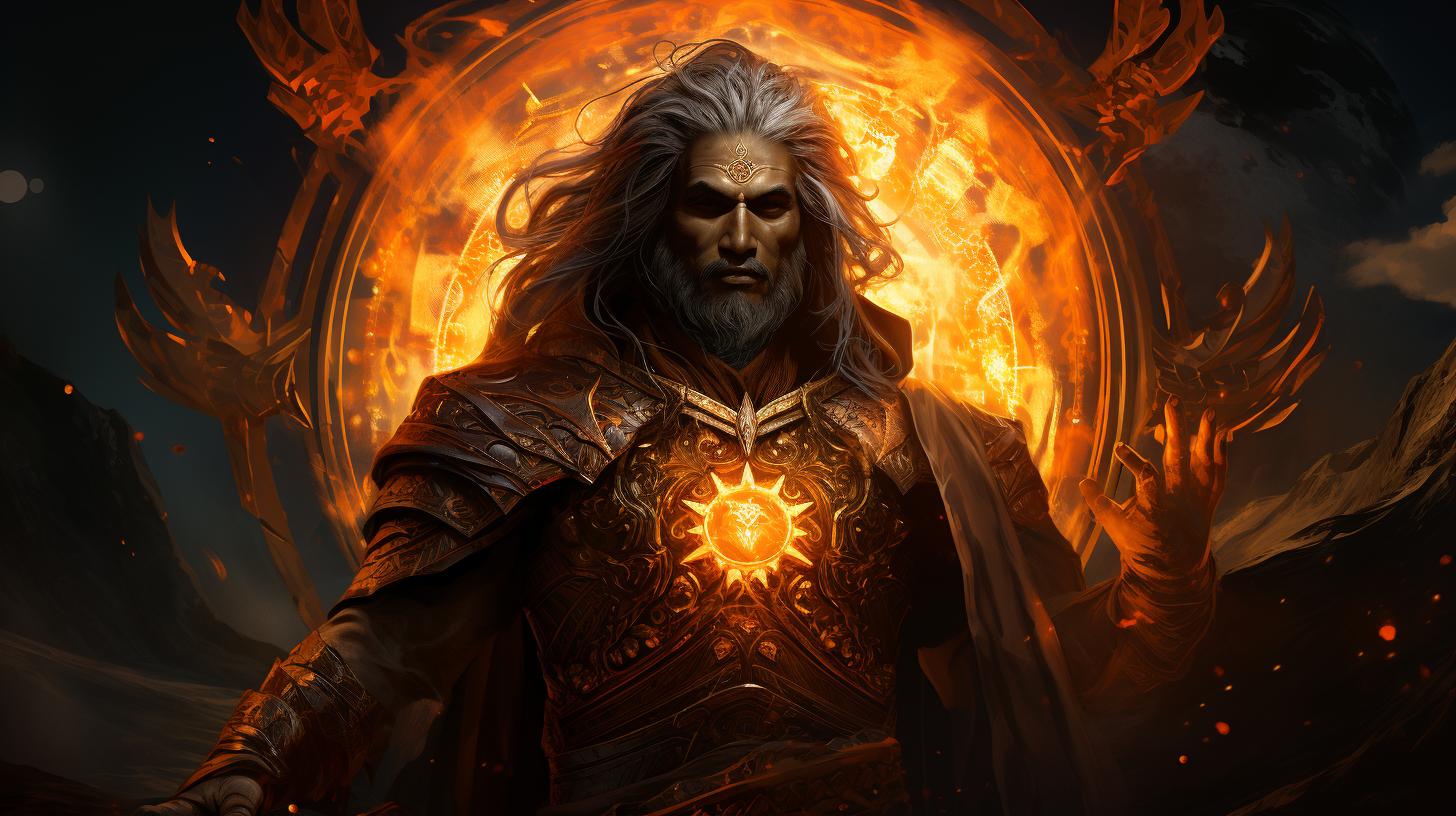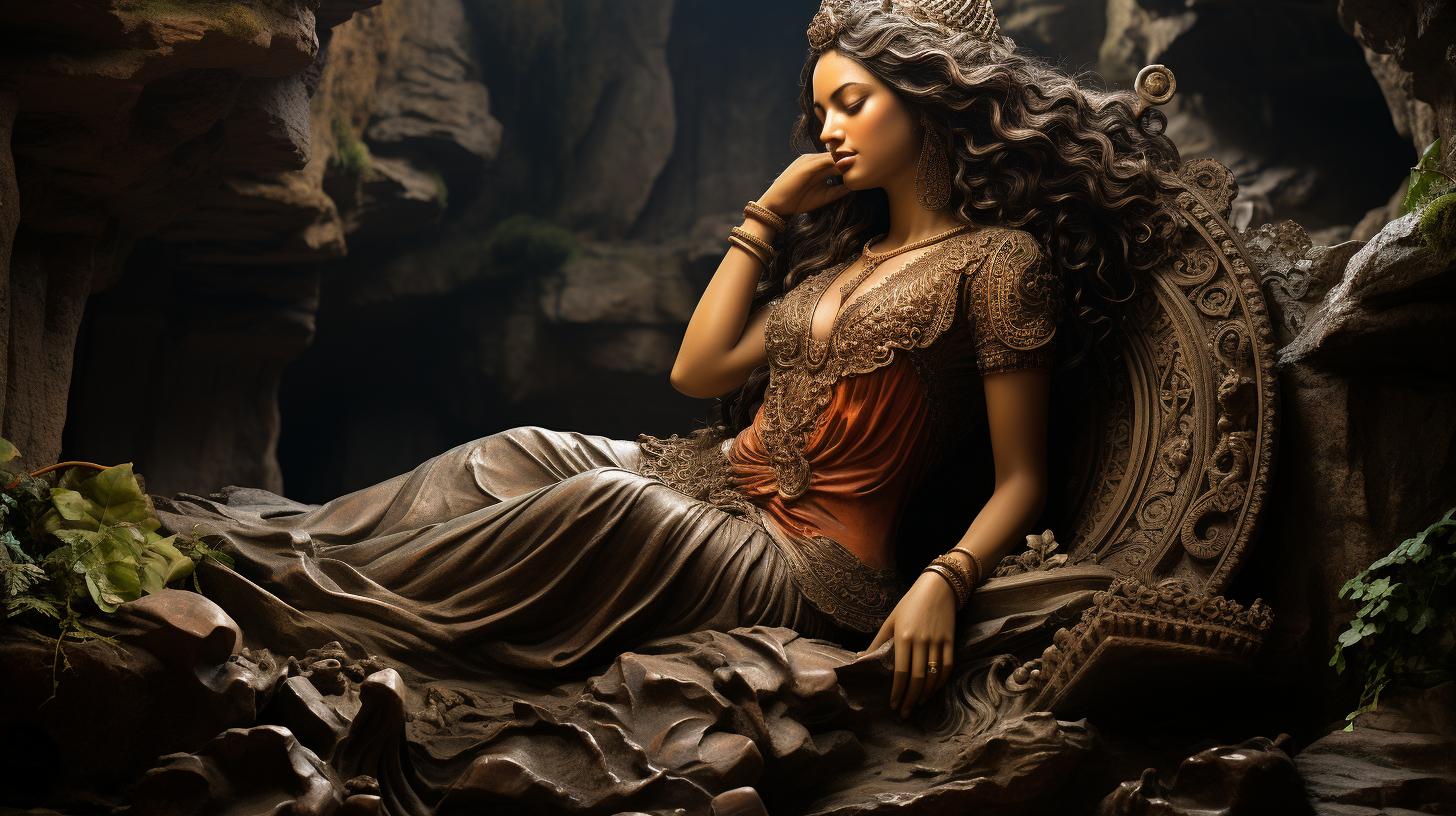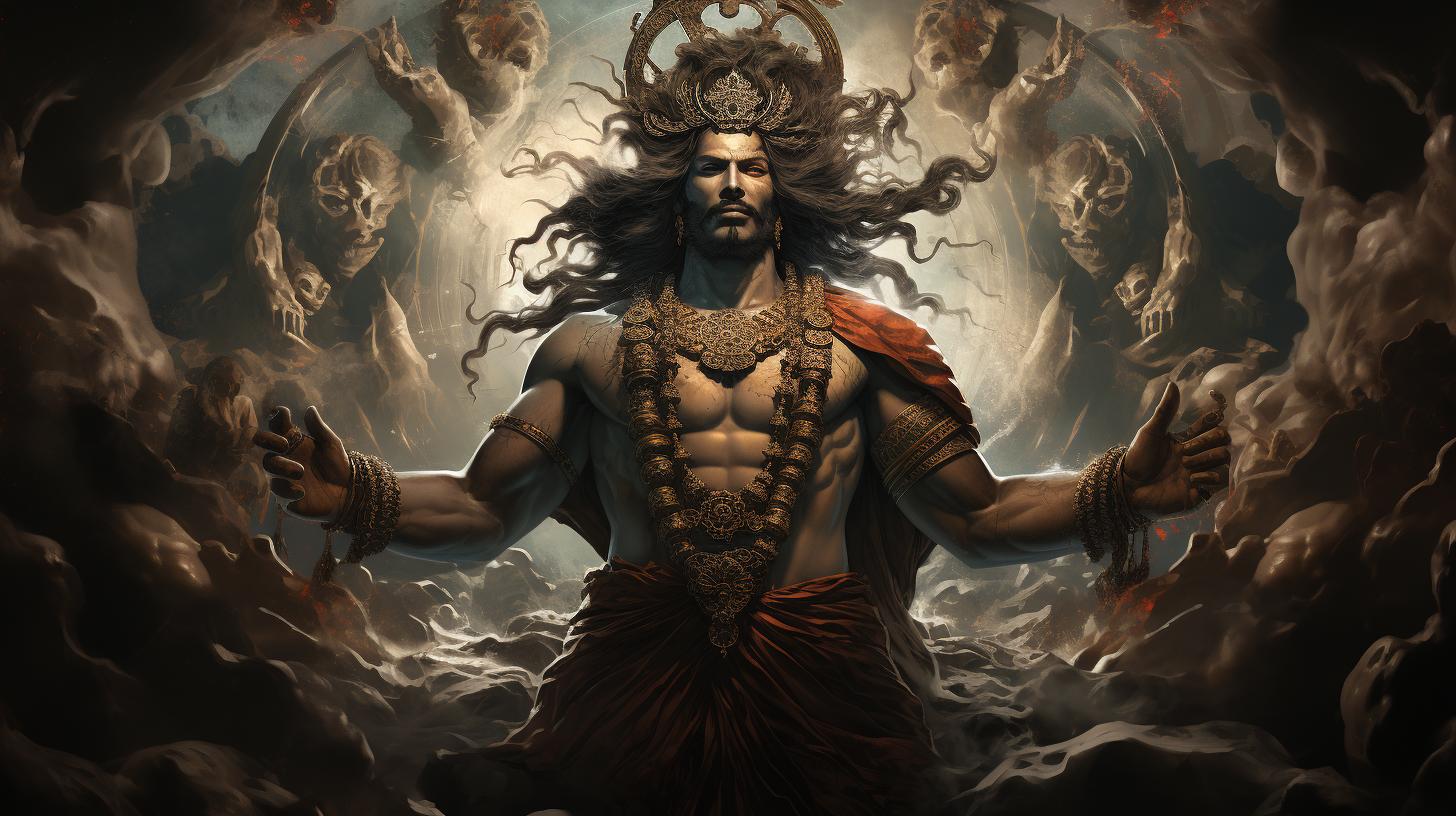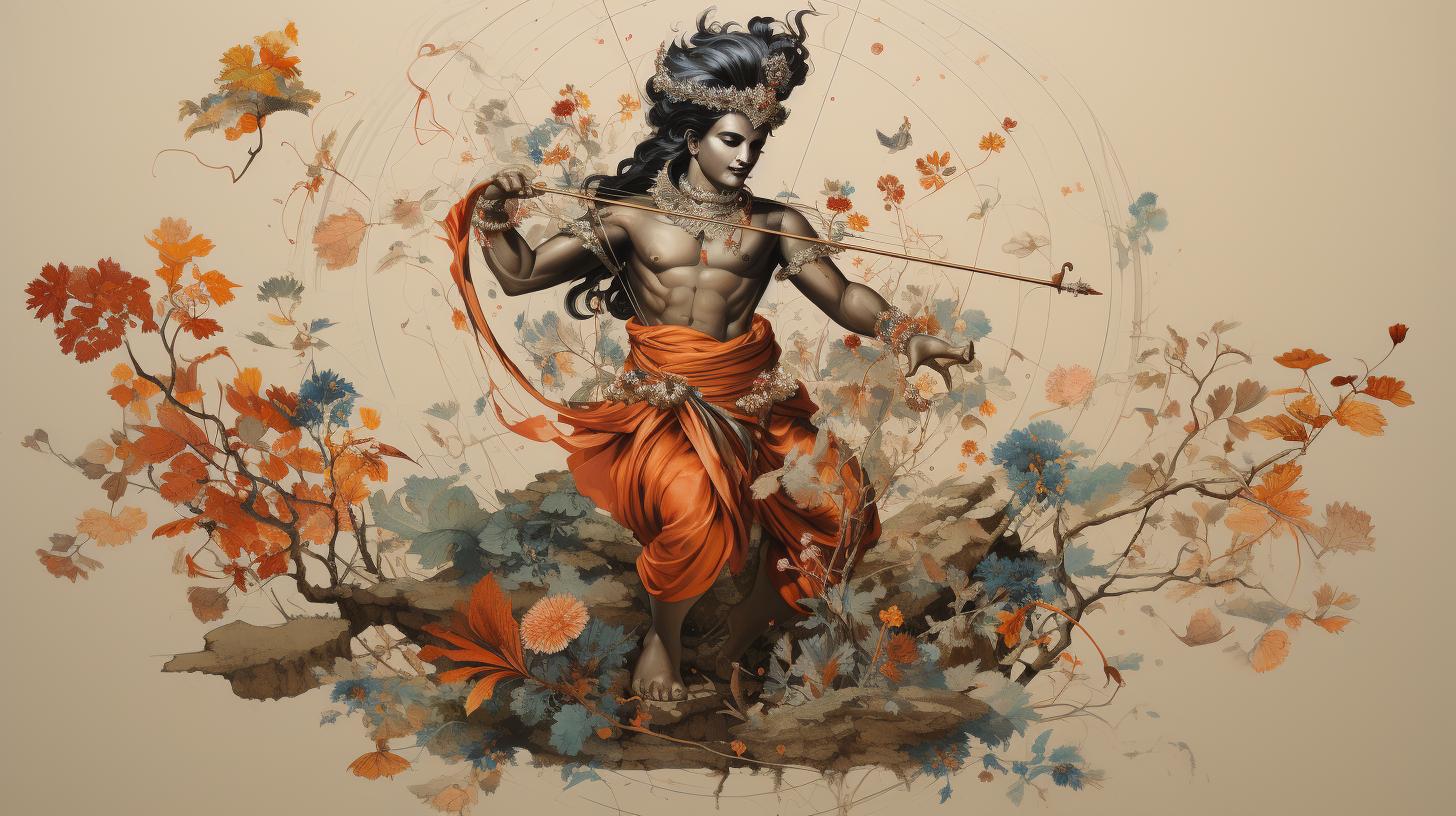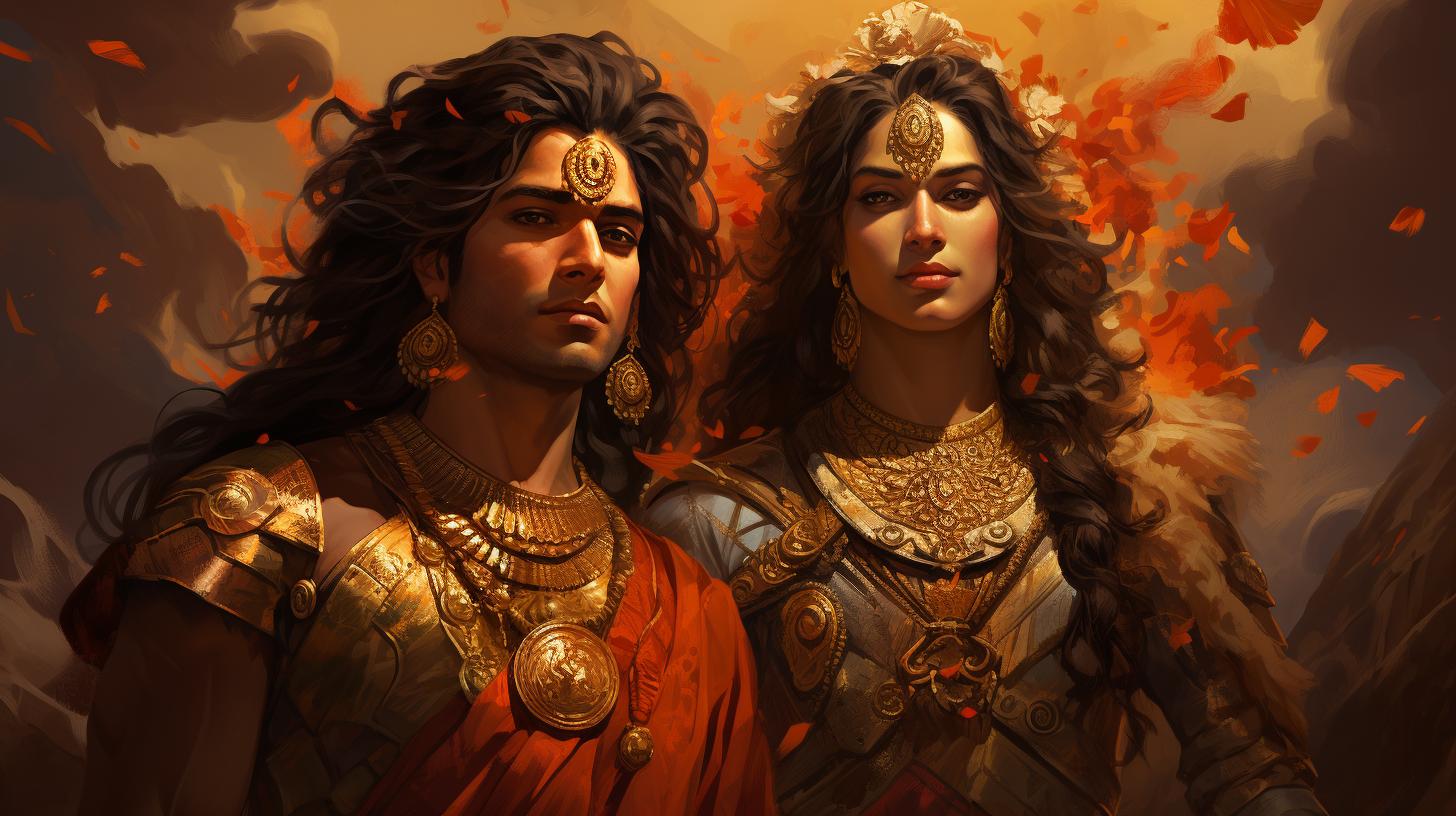Savitar: The Powerful Hindu God of Motion Unveiled
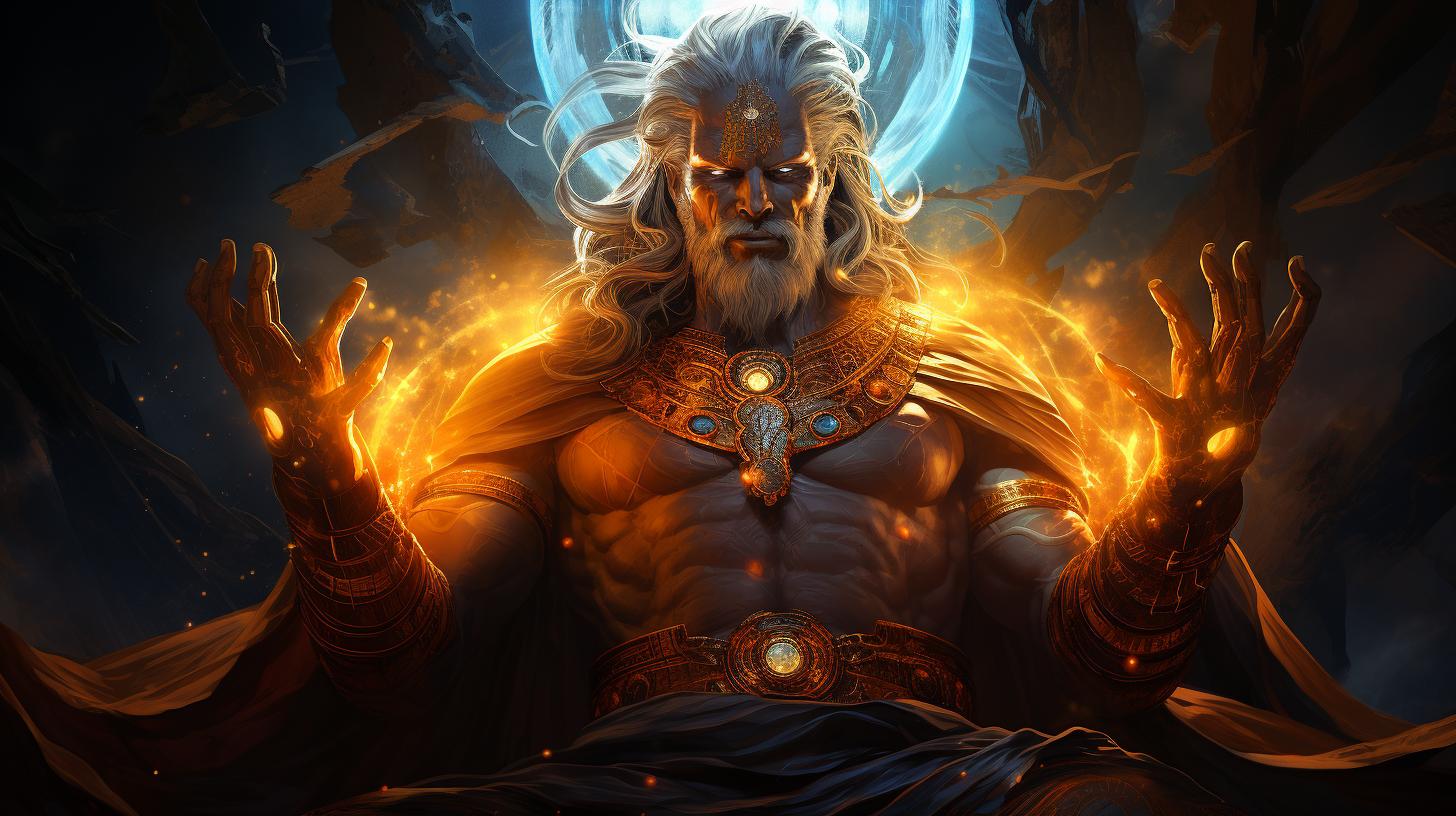
Savitar, the Hindu god of motion, holds significant importance in Hindu mythology and cosmology. Associated with celestial bodies and guiding the seasons and days, Savitar is revered as the creator of the universe and a source of strength and wealth.
Worship and devotion to Savitar are practiced, with the Gayatri mantra playing a pivotal role in Hinduism. While some debate the existence of Savitar, references to this deity can be found in popular culture, such as in ‘The Flash’ TV series.
Join us as we explore the origins, role, controversies, and cultural representations of Savitar in Hinduism.
The Origins of Savitar in Hindu Mythology
Savitar, a prominent deity in Hindu mythology, has a rich history and is associated with various mythological accounts and references. These accounts highlight the significant role that Savitar plays in Hindu cosmology and the Rigveda, one of the oldest Hindu scriptures.
Mythological Accounts and References
Throughout Hindu mythology, Savitar is often depicted as a powerful god responsible for directing celestial bodies, such as the sun, moon, and stars. He is believed to have the divine ability to guide the seasons and the days.
Mythological stories and texts mention Savitar’s involvement in maintaining cosmic balance and ensuring the course of heavenly bodies.
Savitar in Vedic Literature
Savitar’s presence can be found in various Vedic texts, showcasing his significance in ancient Hindu society. The Rigveda, one of the oldest and most revered sacred texts in Hinduism, mentions Savitar’s divine role as the creator of the universe and the source of life.
The chants and hymns dedicated to Savitar in the Rigveda highlight his power and the devotion bestowed upon him by ancient worshippers.
Role of Savitar in the Rigveda
Within the Rigveda, Savitar’s role extends beyond being the creator of the universe. He is regarded as a bestower of strength and wealth to his devotees. The hymns dedicated to Savitar emphasize his association with the Gayatri mantra, a sacred chant revered in Hinduism.
This mantra, often attributed to Savitar, holds immense spiritual significance and is chanted by millions of Hindu followers to connect with the divine.
Savitar’s Role in Hindu Cosmology
Savitar plays a significant role in Hindu cosmology, being associated with various aspects of the universe and its functioning. From being the creator of the universe to his influence on celestial bodies, seasons, and days, Savitar’s presence is felt throughout Hindu mythology and belief.
According to Hindu mythology, Savitar holds the esteemed position of being the creator of the universe. It is believed that his divine energy and motion were instrumental in bringing forth the cosmos and initiating the cycle of creation.
Savitar’s influence is seen in the intricate and interconnected nature of the universe, where celestial bodies like the sun, moon, and stars play crucial roles.
Savitar’s Connection to the Sun, Moon, and Stars
The association of Savitar with celestial bodies is profound.
He is attributed with directing the course of the sun, moon, and stars, symbolizing their movements and the eternal cycle of day and night. Savitar’s connection to these celestial entities highlights his role as a guiding force in the cosmic order.
Savitar’s Influence on Seasons and Days
Another aspect of Savitar’s role in Hindu cosmology is his influence on the seasons and the passage of days. It is believed that Savitar’s divine power helps maintain the harmony and balance of the natural world by guiding the rhythm of seasonal changes and the progression of time.
His presence ensures the regularity and cycle of life on Earth.
In summary, Savitar’s role in Hindu cosmology encompasses his position as the creator of the universe, his connection to celestial bodies like the sun, moon, and stars, and his influence on the passage of seasons and days.
These aspects highlight his significance as a divine force responsible for maintaining the cosmic order and sustaining life on Earth.
Devotion to Savitar: Worship and Practices
Devotion to Savitar, the Hindu god of motion, is marked by various sacred texts, hymns, temples, and rituals. His followers engage in worship practices that are deeply rooted in Hindu tradition and beliefs, celebrating his power and influence over celestial bodies and the cosmic order.
Sacred Texts and Hymns Dedicated to Savitar
In Hinduism, several sacred texts and hymns are dedicated to praising and invoking the blessings of Savitar. These texts include verses from the Rigveda, one of the oldest scriptures in Hinduism.
The hymns highlight Savitar’s role as the director of the sun’s course and emphasize his creative power and life-giving energy.
Devotees of Savitar express their reverence through visits to temples dedicated to the deity. These temples feature iconic representations of Savitar, often accompanied by other celestial beings. Rituals, including prayers, offerings, and ceremonial worship, are performed to honor and seek the blessings of Savitar.
These rituals vary in form and intensity, depending on the specific customs of regions and communities.
Savitar is widely worshipped during religious festivals and auspicious occasions, where elaborate rituals, such as fire ceremonies, are conducted. The rhythmic chanting of hymns and the recitation of sacred mantras, including the Gayatri mantra associated with Savitar, play a significant role in these religious observances, creating an atmosphere of spiritual devotion and connection.
Overall, devotion to Savitar encompasses a range of practices that enrich the spiritual lives of worshippers, reinforcing their faith in the divine power of motion and the cosmic order orchestrated by this revered Hindu deity.
The Gayatri Mantra: A Pivotal Chant in Hinduism
The Gayatri Mantra holds immense power and significance in Hinduism, serving as a pivotal chant that has been passed down through generations. This sacred mantra is revered for its spiritual potency and is often recited during meditation and religious rituals.
Let us explore the profound impact and deeper meaning behind the Gayatri Mantra.
The Power and Significance of the Gayatri Mantra
The Gayatri Mantra is considered one of the most potent prayers in Hinduism, known for its ability to invoke divine blessings and spiritual enlightenment. Composed in Sanskrit, it is a verse dedicated to Goddess Gayatri, the divine embodiment of knowledge and wisdom.
The mantra is believed to bestow clarity, wisdom, and spiritual guidance upon those who chant it with devotion.
By uttering the Gayatri Mantra, individuals seek to awaken their inner intelligence and tap into the cosmic consciousness.
This powerful mantra is believed to activate the spiritual centers in the body, enhancing mental clarity, concentration, and overall well-being. It is also regarded as a source of divine protection, shielding devotees from negative energies and obstacles on their spiritual path.
Connection of the Gayatri Mantra with Savitar
Savitar, the Hindu god of motion, is intimately associated with the Gayatri Mantra. According to Hindu mythology, Savitar personifies the radiant energy of the Sun, often depicted as a solar deity directing the movement of celestial bodies.
It is believed that chanting the Gayatri Mantra invokes the blessings and divine energy of Savitar, as he is considered the prime channel through which the mantra’s power flows.
The connection between Savitar and the Gayatri Mantra symbolizes the divine energy responsible for sustaining life, guiding cosmic forces, and illuminating spiritual paths.
Devotees often seek the intercession of Savitar through the recitation of the Gayatri Mantra, forging a spiritual connection with the source of universal motion and enlightenment.
In conclusion, the Gayatri Mantra holds tremendous significance in Hinduism, serving as a powerful chant that ignites spiritual awakening, wisdom, and divine protection.
It is deeply intertwined with the essence of Savitar, the Hindu god of motion, who is believed to channel the mantra’s divine energy. By embracing the Gayatri Mantra, devotees strive to transcend the material realm and connect with the profound spiritual forces that govern the universe.
Debates and Controversies Surrounding Savitar
Tracing back to ancient times, Savitar, the Hindu god of motion, has been a subject of debates and controversies. This section examines two major aspects surrounding the existence of Savitar: skepticism and scientific perspectives.
Skepticism and Arguments against Savitar’s Existence
Despite being held in high regard by devout Hindus, there are those who question the very existence of Savitar. Skeptics argue that Savitar, like other deities in Hindu mythology, is merely a product of human imagination and mythological storytelling.
They propose that attributing natural phenomena to a divine being is an oversimplification of scientific concepts and knowledge.
Moreover, some skeptics argue that the lack of empirical evidence supporting the existence of Savitar or any supernatural entity undermines the credibility of religious beliefs.
They assert that personal experiences and faith cannot serve as sufficient proof to validate the existence of a god. For them, religious beliefs should be subjected to rational scrutiny and scientific inquiry.
Scientific Perspectives on Hindu Mythology
From a scientific standpoint, Hindu mythology, including the presence of deities like Savitar, is often interpreted metaphorically rather than literal truth. Scholars and researchers view these myths as an attempt by ancient civilizations to explain natural phenomena and understand the complex workings of the universe.
Scientific perspectives propose that celestial bodies like the sun, moon, and stars, which Savitar is associated with, can be better understood through astronomy and physics rather than attributing their movements to a divine force.
They emphasize the importance of pursuing empirical evidence, experimentation, and logical reasoning to gain a deeper understanding of the universe.
While science and religious beliefs may seem incompatible at times, some argue that there can be harmony between the two.
They believe that faith and spirituality can coexist with scientific knowledge, acknowledging that religion serves purposes beyond scientific explanation, such as providing moral guidance and a sense of purpose.
In conclusion,
- Skepticism surrounds the existence of Savitar, with arguments questioning the validity of religious beliefs.
- Scientific perspectives view Hindu mythology metaphorically and suggest seeking scientific understanding of natural phenomena.
- Harmony between science and religion can be possible, recognizing the different roles they play in individuals’ lives.
Popular Culture and Savitar References
The Hindu god Savitar has made appearances in various forms of popular culture, showcasing his influence and intrigue.
This section explores notable references to Savitar, particularly in ‘The Flash’ TV series and other mediums.
Savitar in ‘The Flash’ TV Series
One significant depiction of Savitar can be observed in ‘The Flash’ TV series. In the show, Savitar is portrayed as a powerful antagonist and a self-proclaimed god of speed, connecting to his role as the Hindu god of motion.
The character exhibits immense speed and agility, commanding attention with his enigmatic persona.
Throughout the storyline, ‘The Flash’ delves into the complexities of Savitar’s character, drawing inspiration from Hindu mythology. This portrayal has sparked debates among fans and cultural enthusiasts, as it presents a blend of popular culture and religious symbolism.
Representation of Savitar in Different Mediums
Besides ‘The Flash’, Savitar has also found representation in various other mediums, showcasing his enduring popularity. From comic books to artwork and even cosplay, devotees and artists have embraced the concept of Savitar, giving shape to their interpretations of the deity.
These representations often highlight Savitar’s connection to motion, employing dynamic visuals and symbolism to capture his essence. Artists strive to bring forth the divine energy and power associated with Savitar, reflecting the deep-rooted cultural significance he holds within Hindu mythology.
Whether it be through television series or artistic creations, the presence of Savitar in popular culture continues to fascinate and captivate audiences, amplifying interest in Hindu mythology and its gods.
Exploring Related Deities and Concepts in Hinduism
In this section, we will explore the connections between Savitar and other Hindu deities, as well as delve into the concept of motion in Hindu philosophy.
Comparisons with Other Hindu Gods and Goddesses
Hinduism is a rich and diverse religion with numerous gods and goddesses, each having their own unique attributes and roles. When comparing Savitar to other deities, certain parallels can be drawn.
For instance, Savitar shares similarities with Surya, the god of the sun, as both are associated with celestial bodies and play a significant role in the cosmos. Additionally, Savitar’s role as the creator of the universe aligns with Brahma, the supreme god of creation in Hindu mythology.
By examining these connections, we can gain a deeper understanding of how different deities interrelate in the Hindu pantheon.
Concept of Motion in Hindu Philosophy
In Hindu philosophy, the concept of motion holds profound significance. It is believed that motion is an essential aspect of the universe, symbolizing progress, change, and transformation. Hindu scriptures and philosophical texts explore the idea of motion on both a physical and metaphysical level, discussing its connection to time, energy, and spiritual growth.
By contemplating the concept of motion, one can gain insights into the fundamental nature of existence and the intricate workings of the cosmos.
By examining the intricate connections between Savitar and other deities, as well as delving into the concept of motion in Hindu philosophy, we can gain a deeper understanding of the rich tapestry of beliefs and ideas present in Hinduism.
These explorations shed light on the multifaceted nature of Savitar and his place within the broader framework of Hindu cosmology and theology.
See Also
Other Hindu Deities Associated with Celestial Bodies
In addition to Savitar, Hindu mythology encompasses other deities that are closely related to celestial bodies. These deities include:
- Surya – The sun god, responsible for granting warmth, light, and vitality to the world.
- Chandra – The moon god, associated with beauty, tranquility, and the cycles of time.
- Adityas – A group of solar deities, representing different aspects of the sun’s energy and power.
- Rahu and Ketu – Celestial demons believed to cause eclipses and celestial disturbances.
Hindu Rituals and Festivals Involving Sun Worship
The Hindu religion celebrates various rituals and festivals that involve the worship of the sun.
These include:
- Makar Sankranti – A harvest festival marking the transition of the sun into the zodiac sign of Capricorn.
- Chhath Puja – A festival dedicated to the sun god, celebrated with fasting, bathing in rivers, and offering prayers.
- Ratha Saptami – A festival honoring the sun god’s chariot, believed to bring health and prosperity.
- Pongal – A Tamil festival celebrating the sun’s energy and abundance, observed with cooking traditional dishes and exchanging gifts.
Exploring these related deities and rituals provides a deeper understanding of the rich tapestry of Hindu mythology and the important role they play in the lives of devotees.











